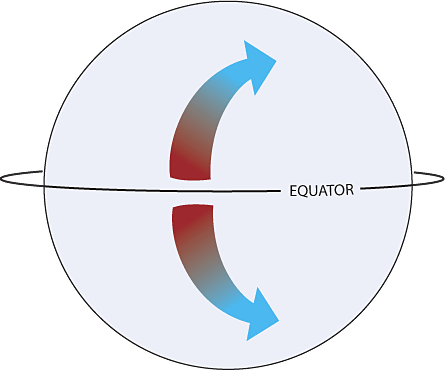The
Coriolis Effect
The Coriolis
Effect is a result of the Earth's rotation. Due to
the Earth's rotation, motion across the surface of
the Earth experiences deflection from its linear
trajectory. A common analogy is throwing a ball
across a carousel. When the carousel is
stationary, the ball lands where it was aimed. If
the carousel is set in counterclockwise motion,
the ball will land to the right of the point at
which it was aimed, because the target point
rotated to the left. Similarly, the Earth's
rotation deflects large motions, such as winds,
which subsequently set ocean currents in motion.
In the Northern Hemisphere, motion deflects to the
right, because the Earth rotates to the east, and
because the equator spins at a greater velocity
than higher latitudes. This site focuses on phenomena
in the Northern Hemisphere.

